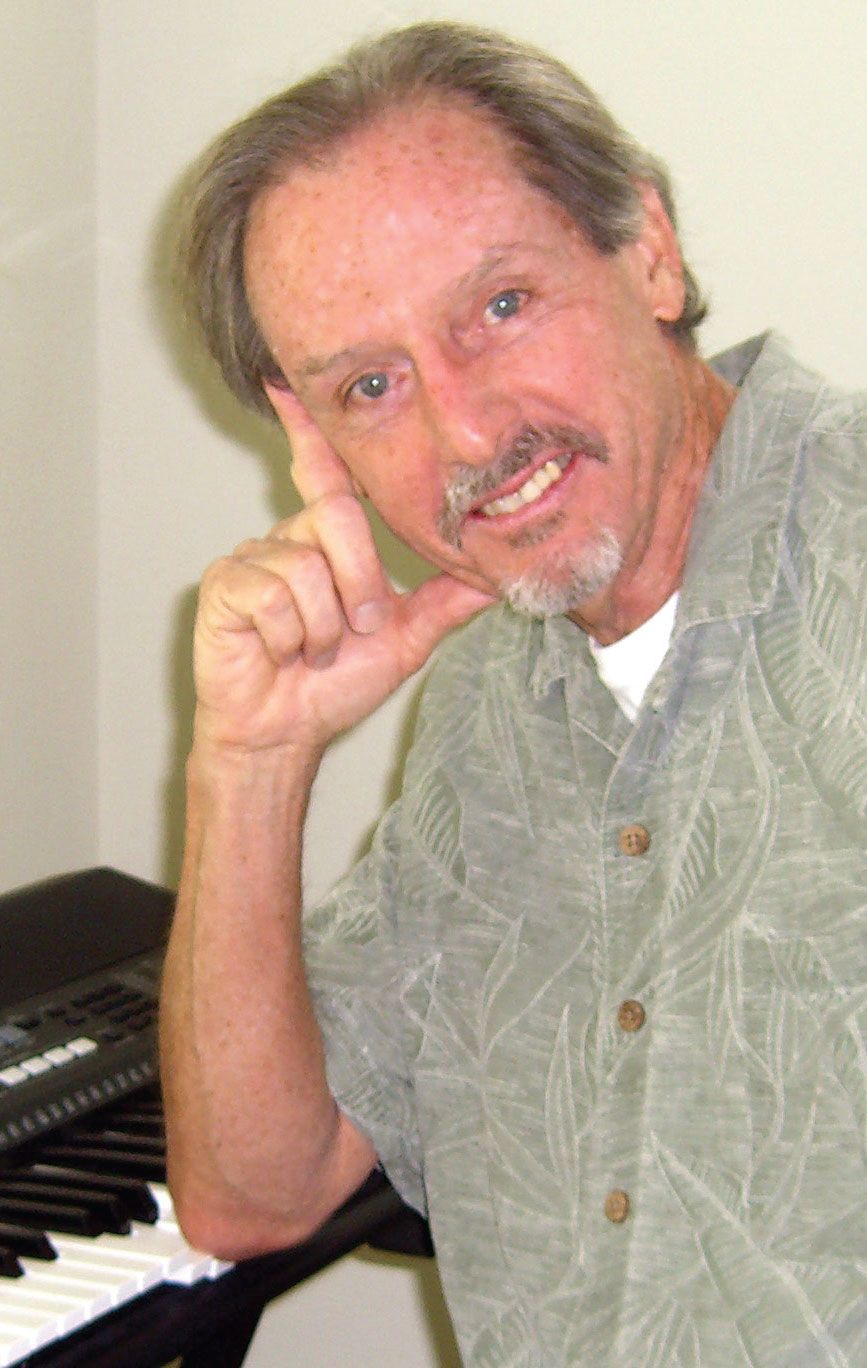Healing in the Key of C: Joy in Music for Cancer Survivors
The discord of our cancer is only a wrong note in our expression of the score of life. And I believe that, with due diligence and conscious camaraderie with our own bodies, we can live in harmony once more.
Photo courtesy of Khevin Barnes

Khevin Barnes is a breast cancer survivor, speaker and songwriter. His song “What Good is a Breast?” is a respectfully irreverent and humorous salute to the human breast. [Photo courtesy of Khevin Barnes]
I've been a songwriter and musician for as long as I can remember. In my youth, I made a meager living for a few years playing banjo in pizza parlors before graduating to night clubs. The city of Seattle once asked me to travel with a big band to Moscow, to introduce the five-string banjo to Russian audiences. I dabbled in writing radio jingles for a while, and as electronic music became more sophisticated and affordable, I fell in love with composing orchestral pieces on the digital synthesizer.
This all took place long before cancer was discovered in my left breast.
Music, the universal language, has filled cathedrals and concert halls, high school gyms and old-time theaters, auditoriums and opera houses since the beginning of recorded time.
But the place where music seems to resonate most lyrically and everlastingly is in the human heart.
It’s through music, as a songwriter, that I have always recognized my avenue of self-expression, and it’s in music that I’ve found deep comfort in my waltz with breast cancer.
To my ear, there is no instrument more compelling and magnificent than the human voice. We are able to express every emotion in such profound ways; to celebrate or grieve, to comfort or stir with a simple breath and an exhale.
Nobody really knows if music is found anywhere outside our own planet. Technically, sound does not exist in space. It needs a medium such as air or water to vibrate and expand. But planets and stars and the solar wind shimmer in an elegant and primordial fellowship with all that is life, and just because we can’t hear it does not mean it isn’t there.
I feel that way about cancer. We can’t see the work our bodies are doing in their effort to eradicate cancer cells, but I believe our intrinsic human drive is to keep on living. We are not separate from the cellular symphony inside of us. The discord of our cancer is only a wrong note in our expression of the score of life. And I believe that, with due diligence and conscious camaraderie with our own bodies, we can live in harmony once more.
The unanswered question seems to be the way in which we orchestrate our healing, and that appears to be different for all of us.
I didn’t start trying to learn piano until I was 60. The electronic synthesizer allowed me to compose with 500 instruments at my fingertips, but since I am unable to read music, I created my pieces one note at a time. It was slow going, but I managed to write a complete Broadway-style musical in this way.
This, too, is how I approach my cancer recovery: one note at a time, listening to the music of wellness, which sounds so much sweeter than the fear of recurrence.
It’s not surprising that music therapy is actually an established field in which music is used within a therapeutic relationship to address the physical, emotional, cognitive and social needs of individuals. Because during chemotherapy or while recovering from surgery, when things hurt and our bodies ache, a little song in your heart can be as relaxing and stress-reducing as a kitten on your lap.
Heck, on a really bad day, why not try that little song and a kitten on your lap at the same time? You just may make some beautiful, healing music together.

Patrick Swayze’s Widow Reflects His Cancer, Demi Moore Speaks About Breast Cancer and More
April 12th 2024From Patrick Swayze’s widow recalling his pancreatic cancer diagnosis to Demi Moore speaking about her aunt’s courage during cancer, here’s what’s going on in the oncology space this week.
Read More
FDA, Cancer Vaccine Updates and a Misguiding of Breast Cancer Treatment
February 5th 2024One cancer vaccine may still be years away from being available, a breast cancer test may be misguiding treatments for Black women and the review of two oncology regimens are being expedited by the FDA.
Listen